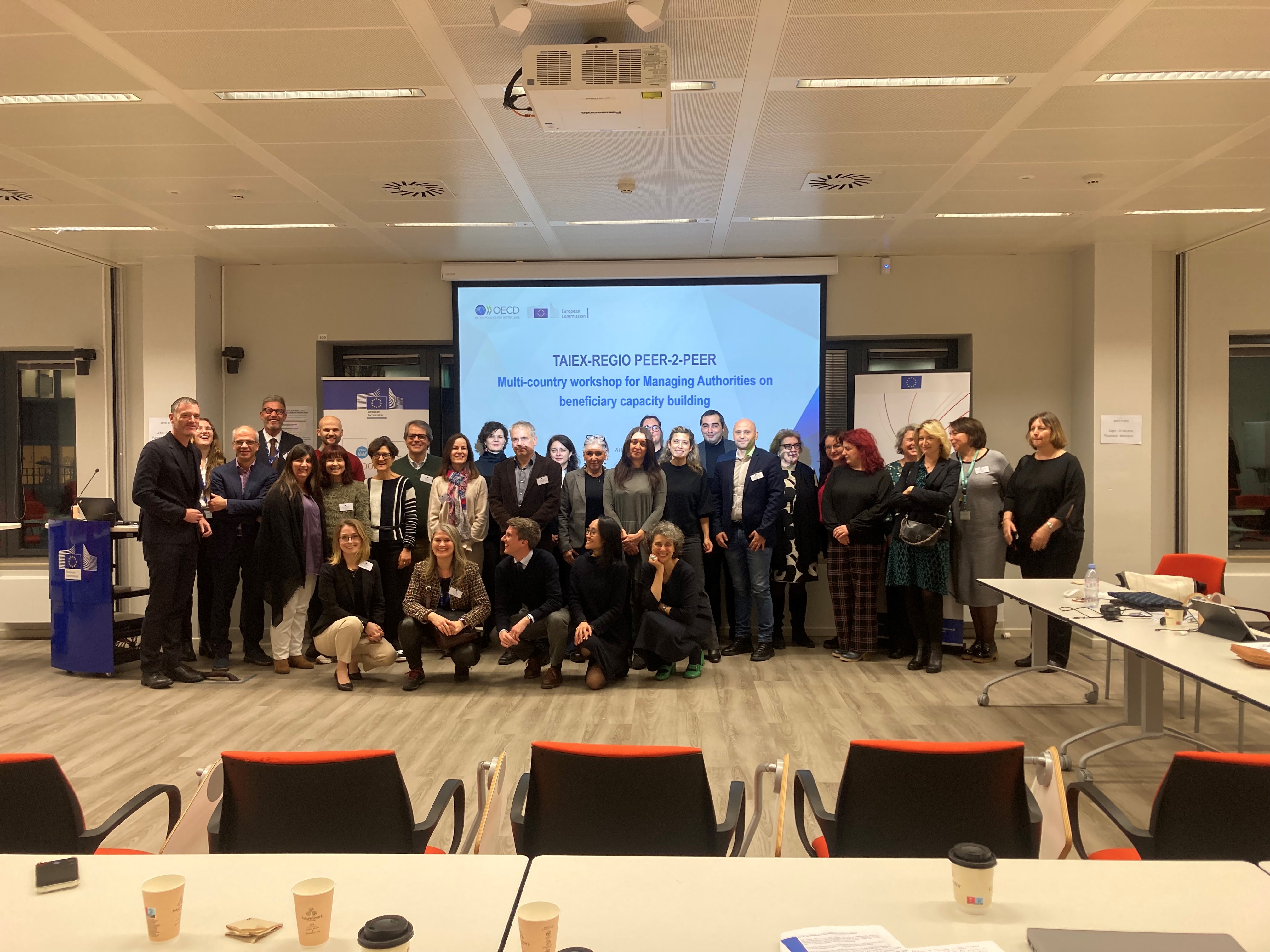FAQ
When can we expect the final version of the Interreg Programme (IP) of the Danube Region programme (DRP)?
The adoption of the Interreg Programme (document) by the European Commission is expected in autumn 2022.
Is the programme area the same as in the previous period?
The programme area stays the same as in the 2014-2020 programming period. Nevertheless, the Partner States decided that partners from the entire territory of Ukraine can participate in projects financed by the programme.
What is different in this programming period compared to the Danube Transnational Programme (DTP)?
In line with Article 17(4)(b) of the Interreg regulation, Partner States have agreed to pool the three EU funds into “Interreg Fund”, meaning ERDF, IPA and NDICI funds are pooled together.The lead partners can now be nominated from non-EU countries, as well. However, the partners from Ukraine can not be lead partners in the 1s call for proposals.The DRP covers the entire territory of Ukraine (UA) by considering that the part of the operations implemented outside programme area (the UA regions not officially involved in the programme) directly contribute to the objectives of the programme.The EU co-financing rate is set to 80%.A new Priority 3 “A more social Danube Region” was introduced in the new programme.
How many calls will be there?
For the first call maximum half of the programme budget will be allocated. The Monitoring Committee of the programme will decide on the future calls content and number. Potentially at least three calls for proposals will be launched.
Is there national contribution like in the previous programme?
State contribution is regulated at national level therefore contact your National contact point for details.
How can we check the eligibility of our organisation to become a partner?
The Applicants’ Manual is setting the rules for the lead partner’s/ partners’ eligibility. When in doubt, applicants should consult their National Contact Points in order to check their eligibility.
How can I find a partner(s) or join a project idea?
Applicants can ask the support of the National Contact Points/ EUSDR Priority Area Coordinators/ MA/ JS for partner search purposes.
What is the maximum number of partners involved?
The maximum number of partners is not set at programme level. The partnership size and composition should be tailored in such a way to correspond to the project activities and achievements of the project results. Therefore, the partnership should ensure thematic and territorial relevance and competence in a coherent and balanced way.
Is there a minimum number of partners or countries in a project?
Each project has to involve at least three directly financing partners from three different countries of the programme area: the lead partner and at least two Project Partners. At least one partner must be a beneficiary from a Member States of the programme area.While meeting the eligibility requirement, it is to be said that such partnership would have very limited potentials to ensure sufficient level of transnational impact in a project, therefore broader partnerships are expected.
Is there any limitation in how many projects a partner can be involved in?
There is no such limitation imposed by the programme, but applicants should ensure the financial and human resources necessary for the projects’ implementation.
Does each project need to have non-EU project partners?
Even though involvement of the non-EU project partners is not an eligibility criterion, the programme strongly supports the involvement of partners coming from non-EU countries of the programme area this being subject to quality assessment. Nonetheless, the projects addressing a specific territory or topic relevant for EU Member States of the programme area can be financed if their quality is high.
Is it allowed to have 2 similar types of organisations from one country, e.g., NGOs?
Yes, it is.
Who can be a lead partner, what type of organisation?
Lead partner organisations can be public bodies, bodies governed by public law, private non-profit institutions or international organisations. Private for-profit enterprises cannot be lead partner.
What is the average number of partners in approved projects?
In approved DTP projects, the average number of partners is 12-14. The number of partners may considerably vary between the projects depending on the character of the project as well as the territories addressed. The project partnership should be comprised in a strategic manner and well adapted to its purpose. Keeping this in mind, the partnership should always reflect on the optimal number and role of partners to be involved. No maximum limit of partners is fixed at the programme level.
Can there be more than one partner from the same country in the project?
Yes, there can be more than one partner from the same country in one project, provided that the role in the projects is clear and justified.
What is the maximum number of partners from one country per project?
The maximum number of partners from one country is not set at programme level as it depends on a topic, project idea and how many partners are useful and necessary for proper project implementation.
Can Ukraine participate?
Yes, partners from Ukraine can participate with the only exemption that they can’t be lead partners in the 1st call for proposals.
Are partners from outside the DRP area, e.g., from France, allowed?
In the first call organisations outside programme area can be involved only as Associated Strategic Partners (ASPs). ASPs don’t have their own project budget but one of the financing partners will support their participation through „sponsored” travel and accommodation costs.
What is the maximum project budget?
There is no project maximum budget limit set at programme level. The budget should be planned in accordance with the project activities and size of the partnership.
What is the indicative project budget?
The budget depends on the topic, project activities, size of the partnership. Typically, the average budget ranges between 1,5 M to 2/2,5 M EUR.
What is the grant rate?
The co-financing rate - per directly financed partner - is 80% EU contribution.
Is it possible to pay for the expertise of the Associated Strategic Partner from the budget through subcontracting?
No, it is not possible to sub-contract ASPs. Sub-contracting project partners also will not be acceptable.
We would like to subcontract one organisation whose expertise is important for the success of the project. How can we do it?
Subcontracting must be in line with national public procurement rules for Project partners from EU countries or in line with the rules of the financing agreements for non-EU countries. Further programme rules on procurement below the shall be applied according to DRP Manual on eligibility of expenditure.
Do ASPs need to be included in the EoI?
Yes, ASPs have to be included in the EoI as they bring added value to the project proposal and the partnership itself. The Partnership is a part of the quality assessment criteria.
Can ASP be hired also as an external expert?
No, ASPs cannot be subcontracted by project partners as external experts.
Must ASPs be located in the Danube area?
ASPs can come outside the programme area in the EU. And they can be from the non-EU countries of the programme area.
Is it recommended to have a balance between the number of PPs and ASPs?
No, the programme never expects the balance between the number of PPs and ASPs.
Is it possible to have a partner who is a member of association?
In case of two different legal entities, then yes.
Does the lead partner (LP) have to have a lead partner experience in the Danube Programme?
No, it is not required. The lead partner has to have some experience in the management of EU funded projects; experience in the management of international, transnational cooperation projects is recommended but is not mandatory.Lead partner should also possess: sound institutional capacity, sufficient financial, technical and human resources; awareness of the administrative burden which implies the lead partner role; In-depth knowledge of the DRP rules; High level of commitment of both lead partner organisation and project management team; Intercultural sensitivity and pro-active management approach of the project management team.
What is the scoring for involvement of non-EU countries?
During the quality assessment the “Partnership” section will have two questions “To what extent is the partnership composition relevant, justified and balanced for the proposed project?” and “To what extent are the non-EU countries of the programme area involved in the partnership?”. The maximum score per each section is five. These two questions are equal in scores and weigh. The total weight of the two questions combined in total project score is thirty. In case the project will not involve non-EU countries, it will receive zero for the second assessment question, but in case of a very good proposal this will not lead to its rejection. If the partnership will involve a nominal non-EU country, it can also loose points.The programme encourages the projects to involve only relevant partners, which are essential for achievement of the project results. Even without a non-EU county on board, the project can get high scores and can be awarded a grant. Please do not artificially involve non-EU countries without a real role in the partnership. The balanced involvement of the partners in project activities will also be assessed.
Will “RCO 87 Organisations cooperating across borders” be linked only to one specific objective and not split between specific objectives?
Yes, you can select an output indicator “RCO 87 Organizations cooperating across borders” in one specific objective, and link it with the respective result indicator “ISI: Organisations with increased institutional capacity due to their participation in cooperation activities across borders”.
Can an already developed strategy requiring revision and updating as part of the proposal be included as a project output?
No, an already developed strategy should not be counted as an output. Only the newly developed strategies are counted. The applicant can have an activity like revising the strategy, if it is necessary for the implementation of the rest of the project activities but it should not be counted as an output.
Does a solution coming from pilot activities means that the pilots do not need to be specified in advance? And if yes, to what extent?
It is recommended to have at least a definition of the pilot. It is understandable that in some cases it is difficult to define all the details. However if the applicant can estimate how many pilots will be performed, and in what environment they will be piloted, then, some general information should be provided for the pilot as far as it is a basis for project assessment.
Pilots may also result in a solution or they may also end up in strategies, action plans or something else?
A pilot can only result in a solution not in a strategy or action plan.
Can pilot action derive from joint strategy?
The programme does not expect a pilot action to derive from the strategy.
Does the pilot have to be tested in nature or it can be tested by computer simulation.
It can be tested by computer simulation. The important thing is a pilot is demonstrating the viability of the solution. It should demonstrate that it works in practice.
What are RCO, RCR and ISI?
RCO is an output indicator. RCR is a result indicator taken from the Regulation and ISI (Organisations with increased institutional capacity due to their participation in cooperation activities across borders) is a result indicator which is not taken from the Regulation but defined by INTERACT together with transnational programmes.
How many outputs it is recommended to have (one or two per specific objective)?
It is up to the project partnership to define the outputs. The programme recommends the project to stay focused.
In case of the second step, the partnership will decide to increase the number of PPs/ASPs, should a target value of the respective indicators be also increased?
Yes, the target value of the indicator can be adjusted respectively by increasing its value.
Can we count institutional members of the stakeholders groups under ISI if they are actively contributing to the project activities, meetings, events?
The organisations that are involved in the project partnership (LP, PPs, ASPs) are to be counted under this result indicator, if the result indicator is linked to the output indicator RCO87 (cooperation across border).An organisation, which actively took part in a project pilot action and increased its institutional capacity in the thematic field of the project, but not involved in the project partnership shall be counted under this indicator, if it is linked to the output indicator RCO84 (joint pilot actions). Individuals are not counted under this indicator.
If the participants of pilot actions are people not the organizations. How will they be counted?
Only institutional capacity should be measured. e.g. If you are testing a training scheme, the participants should not be counted. But if during the testing of the training scheme, there appear some institutions which are not a part of the partnership (e.g. universities involved, etc. which later can apply a training scheme), then they should be counted as separate legal entities.
Is it possible to change the amount of budget between the first and the second step?
Yes, it will be possible. But it should be properly justified (e.g. in case of adding PPs/ASPs). The change should be reasonable and in line with the changes brought to the project.
Is it necessary to have an activity/work package leader like it used to be in DTP?
No. The partnership has to decide itself how to organize the management of the project. Applicants may decide that there will be a partner who takes the leadership of certain activities (there will be no work packages). But what the programme is interested in is to see which partners are involved in which activities. The involvement of project partners should be balanced and properly described.
Are there any mandatory documents for the PPs that should be uploaded in Jems for EoI?
No, only the EoI must be submitting through Jems. No additional documents are required to be uploaded.
Are there any good practices observed in DTP regarding distribution of the costs in the project budget e.g. 50% for staff costs, 20% for travel costs, etc. ?
The programme does not have set percentages. Unless it is a flat rate, which will be defined before the second step. The only thing which is requested is to indicate the budget of activities because this reflects the value for money. The programme seeks in the second step a rational distribution per cost category.
How many specific objectives must be defined?
Applicants can choose up to three specific objectives for the project.
Where the description of management activities should be provided in EoI?
Management is integrated in activities, and it is part of activities budget. When describing activities always provide a description of who will be responsible for what.
News & Events
Explore our upcoming events and read news regarding our programme and project activities.
Would you like to receive programme updates?
You're already part of our community!
Welcome to our newsletter community!
Subscribe to our newsletter



